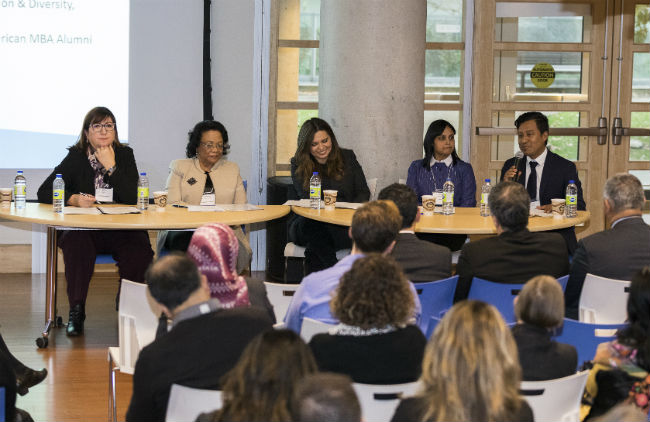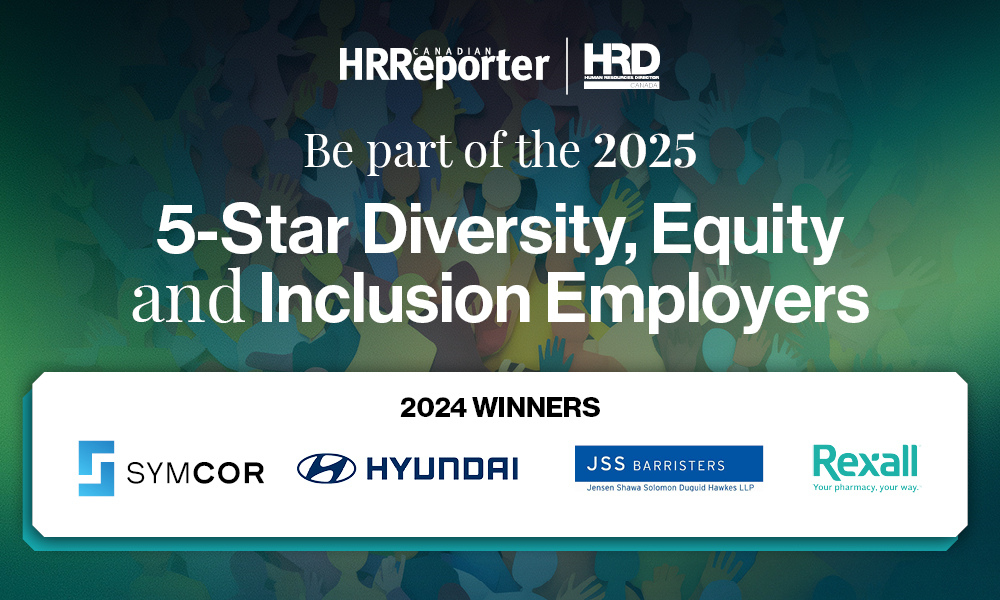Despite progress, issues remain with pay gap, integration: Report

While Canadian newcomers’ ability to find skills-commensurate employment is improving, troubles including underemployment, lower wages and weaker integration persist, according to a new report.
Newcomers with a Canadian degree continue to fare better than those without, said Denise McLean, an eCaliber Group consultant in Hamilton, Ont., who co-authored the report for the Toronto Region Immigrant Employment Council (TRIEC).
“Sixty per cent of newcomer males work in jobs below their level of education,” she said. “That’s an example of underemployment, where those skills are not really being leveraged within the workforce.”
Female newcomers in the Greater Toronto Area (GTA) who hold a university degree earn half the amount of their Canadian-born peers, a statistic that has remained static since 2003, she said.
Fewer immigrant men are rising to the top of the pay scale, compared to their Canadian-born peers, according to the report, State of Immigrant Inclusion 2018.
And immigrants remain underrepresented in senior positions, even though they make up 52 per cent of the GTA’s university-educated workforce, found the report, based on a review of reports and policy documents from 2000 to 2018, a survey of about 200 people, discussions with nine leaders of Professional Immigrant Networks and 25 employers, interviews with 12 stakeholders, policy experts and service providers, and government data.
“Very few employers (13 per cent) have a specific focus on advancing immigrants to more senior roles,” said McLean. “All of those results show how those talents and skills are being underutilized.”
And many still believe “hiring the best” is at odds with focusing on immigrant talent, she said.
“They don’t necessarily see that by removing the biases, by looking at best practices, that is how they will hire the best. That’s still a gap in awareness and understanding.”
Signs of progress
But it’s not all bad news. For one, the unemployment gap has recently narrowed, said McLean.
Fifteen years ago, university-educated newcomers were four times as likely to be unemployed as Canadians. Today, that gap is down to 2.5 times, she said.
The benefits of hiring immigrant professionals are also better known today, said McLean.
“Four out of five employers in our survey told us when they focus on hiring immigrants, they can see the positive impact on their organizations,” she said. “That’s a big step forward.”
Diversity and inclusion has become an increased focus, with 61 per cent of employers changing hiring practices because of heightened awareness, said McLean.
Canadians’ ability to benefit from immigrants’ contributions depends on their full economic integration, said Margaret Eaton, executive director of TRIEC.
“Now, more then ever, we need to ensure newcomers feel welcome and included,” she said.
“We need immigrants to grow our economy and to ensure prosperity for all... How do we close the gap between the expectations that immigrants have when they come to Canada... and the reality of what happens on the ground?”
Beyond simple integration
It’s time for integration groups to look beyond simply finding immigrants a first job, said Iren Koltermann, senior management consultant at eCaliber Group.
“Most immigrants, depending on their circumstances, are interested in getting a survival job.”
But employers should push to uncover immigrants’ hidden talents and help them progress in their career, she said.
The Canadian experience requirement should be left in the past, said Koltermann, and employers need to rethink how they view international credentials.
“People who have degrees from abroad often are not able to access meaningful jobs… or jobs that are commensurate with their experience,” she said, noting bridging and mentoring programs have helped newcomers become better connected.
“We are making great progress, but how do we scale it so more immigrants can access this?”
Even as more employers enter the discussion on diversity and inclusion, more action is still needed, said Kristine Remedios, director of diversity and inclusion at KPMG Canada, during a panel discussion following the release of TRIEC’s report.
“If you want to be intentional… spend some time and put some dollars against actually having a team and a structure in place to support it,” she said.
Collection of data to measure successes is also imperative, said Remedios.
“The simple benefit is just the conversation and the creativity and the innovation.”
Unfortunately, the barriers immigrant workers go up against don’t disappear after people enter the workforce, said Allison Pond, president and CEO of ACCES employment in Toronto.
“That’s a reality,” she said. “The challenges they face are often recognition of credentials... and lack of networks.”
Immigrant workers don’t simply need doors opened, but also support once inside the organization, said Remedios.
“There’s no point in bringing them in only for them to turn around and then leave, or not progress.”
Immigrants need to act, too
Development opportunities and sponsorships for high-potential people should be given consideration, though not all of the onus is on employers, said Remedios. Immigrant employees also need to take some responsibility in terms of applying pressure to advance their careers.
It’s a shared responsibility between leadership and individuals, said Emiliano Mendez, co-founder of the Latin American MBA Alumni Network (LAMBA).
“There’s a lot of work that needs to happen to help that newcomer, new employee understand the rules of your workplace — how things actually work,” he said.
New immigrants could also use a change in perspective around recruitment, as cultural upbringing around humility and traditional gender roles can affect workplace interactions, said Remedios.
“It is not enough to sit behind your desk and just do hard work,” she said. “You can’t sit there and expect that people will see that and you’ll just advance. You need to speak up.”
Building trust with peers is important for employees, as is the development of relationships through coffee chats, lunches and personal conversation, said Mendez.
“The more people trust you, the more they will give you other opportunities to do more work,” he said. “Sometimes it’s just as simple as building that personal relationship… You need to build that trust with your team first, and then the rest will follow.”
Work is changing, said Catherine Chandler-Crichlow, president and chief human capital officer of 3C Workforce Solutions and chair of TRIEC’s board of directors.
And it’s on workers to not rely on the education system alone, but rather “learn the system,” and shift their mindset to alternative careers, she said.
“If people come in and think they want to get just that one job, and they hold out for that one job, which might not exist… they are opting out of potential opportunities.”




